Latest News:
2023-09-25
50% of the world’s energy consumption is heat, and the vast majority of the heat sources we use to meet our heat needs are still fossil fuels such as natural gas, coal and oil. So, what are the options when it comes to replacing fossil fuels with clean and renewable heat solutions for industrial and district heating applications?
In today’s global energy context, approximately half of the total energy consumed is in the form of heat. This critical thermal energy serves a variety of purposes, ranging from heating our homes and warming water for showers to playing a central role in various manufacturing processes and everyday essentials, including the production of food, clothing, and medicines.
In the midst of global challenges such as climate change and environmental degradation, the transition to renewable energy sources has emerged as a pivotal component of our pursuit of a sustainable future. Currently, heat generation accounts for 40% of global carbon dioxide (CO2) emissions, primarily due to the extensive utilization of fossil fuels in heat production such as:
Coal, a carbon-rich sedimentary rock, has long been the choice for power generation and industrial processes due to its availability and cost effectiveness.
Natural gas, composed primarily of methane, is widely used for residential, commercial, and industrial heating, with the advantage of precise temperature control.
Petroleum, in the form of oil, is a versatile fuel used for heating, transportation, and various manufacturing processes.
So what renewable heat options are currently available for implementation for industrial and district heating use? Achieving decarbonization requires recognizing that there is no one-size-fits-all solution. Instead, a comprehensive approach is needed to reduce dependence on fossil fuels and increase energy efficiency.
What proves crucial is the implementation of a holistic strategy that tailors technologies to meet the unique requirements of each facility. Knowing which technology to combine requires a broad understanding of the different renewable energy sources available.
Depending on the conditions of the facilities where the technologies will operate, such as available space, required heat/steam temperature, electricity prices, sun radiation of the location etc, a collaboration of technologies is recommended. A customized integration between technologies will opimize the price and overall system performance.
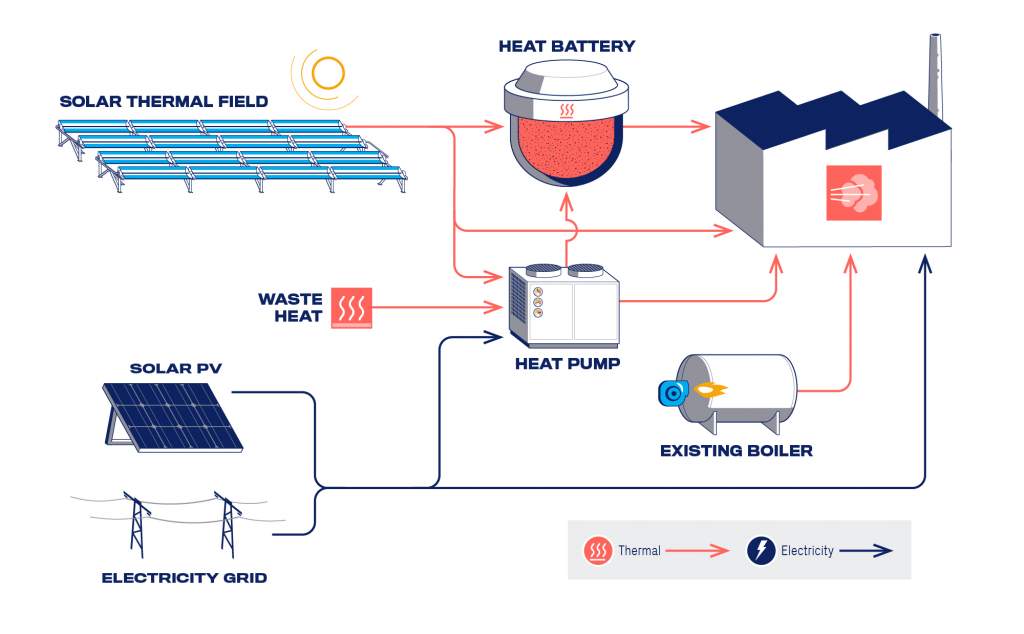
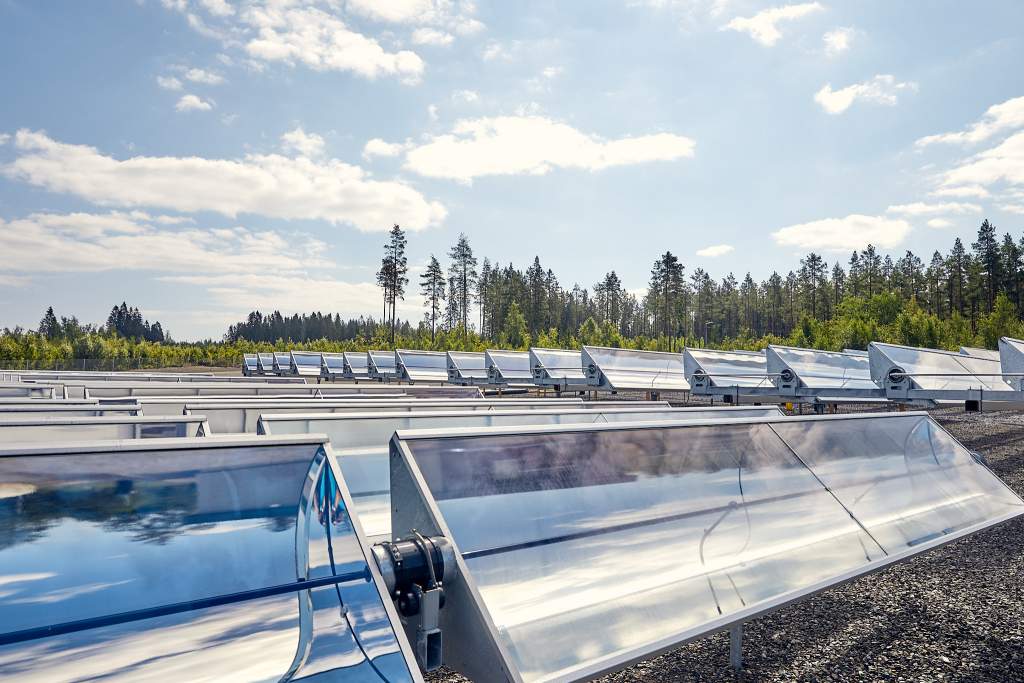
Solar thermal systems are used to generate heat. They collect sunlight using solar collectors and use it to heat a fluid (usually water or antifreeze) for various applications such as steam in industry. The technology is highly efficient in converting solar energy into heat and can achieve conversion efficiencies of up to 70% or more, depending on the specific design and operating conditions.
Solar thermal systems produce zero or negligible greenhouse gas emissions during operation as they use renewable energy from the sun. They help reduce carbon footprint and dependence on fossil fuels.
Solar thermal has the lowest levelized cost of heat of all renewable heat sources. The levelized cost of heat estimates the average cost of providing 1 MWh of heat over the lifetime of the equipment, taking into account the capital costs of the equipment and installation; operating expenditures include the cost of fuel and regular maintenance.
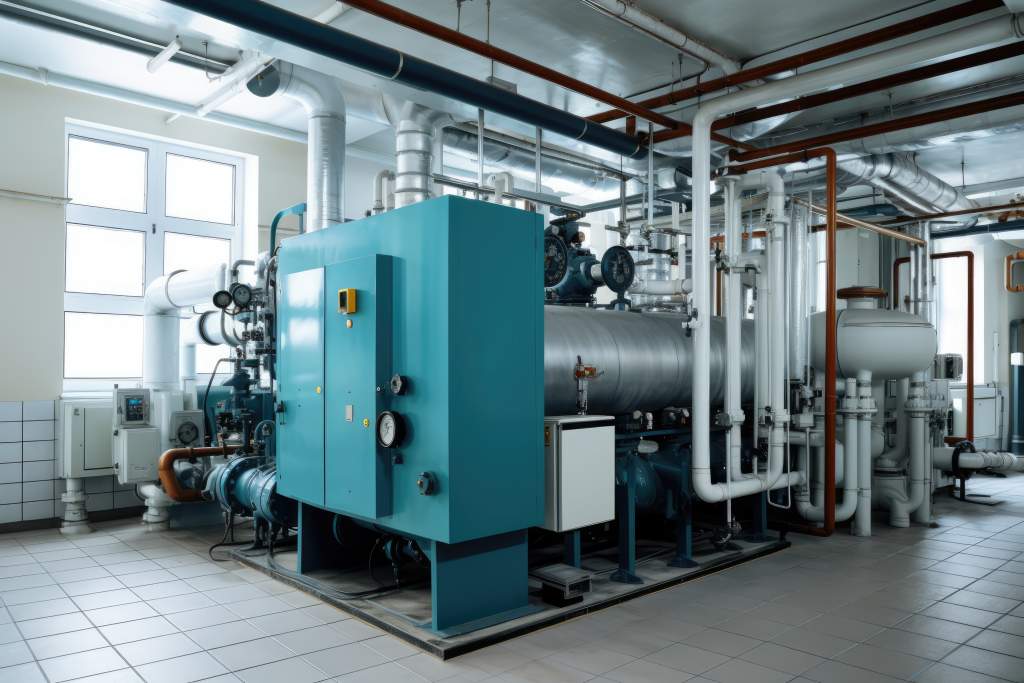
Electrification of the heat supply most often refers to the use of heat pumps. A heat pump is a device that transfers heat energy from low temperature levels to high temperature levels using electricity. It works by extracting heat from a low-temperature source, such as outdoor air, ground, or water, and transferring it to a higher-temperature medium, such as a home or a building.
Heat pumps are highly efficient in heating applications compared to electrical heating systems. They can be up to 3 times more efficient, meaning they can provide three units of heating energy for every unit of electrical energy they consume. However, heat pumps still require a significant amount of electricity to operate.
A major obstacle to electrification and the integration of heat pumps is their dependence on the power grid, the basic infrastructure for distributing electricity. The grid faces significant constraints that hinder the widespread electrification of society due to its aging infrastructure, which was designed decades ago for centralized power generation and distribution.
The environmental impact of heat pumps depends on the source of the electricity used, regions where the electricity grid relies on fossil fuels, heat pumps can result in CO2 emissions indirectly. Therefore, the integration of heat pumps should go hand-in-hand with concerted efforts to secure a power supply that originates from renewable energy sources.
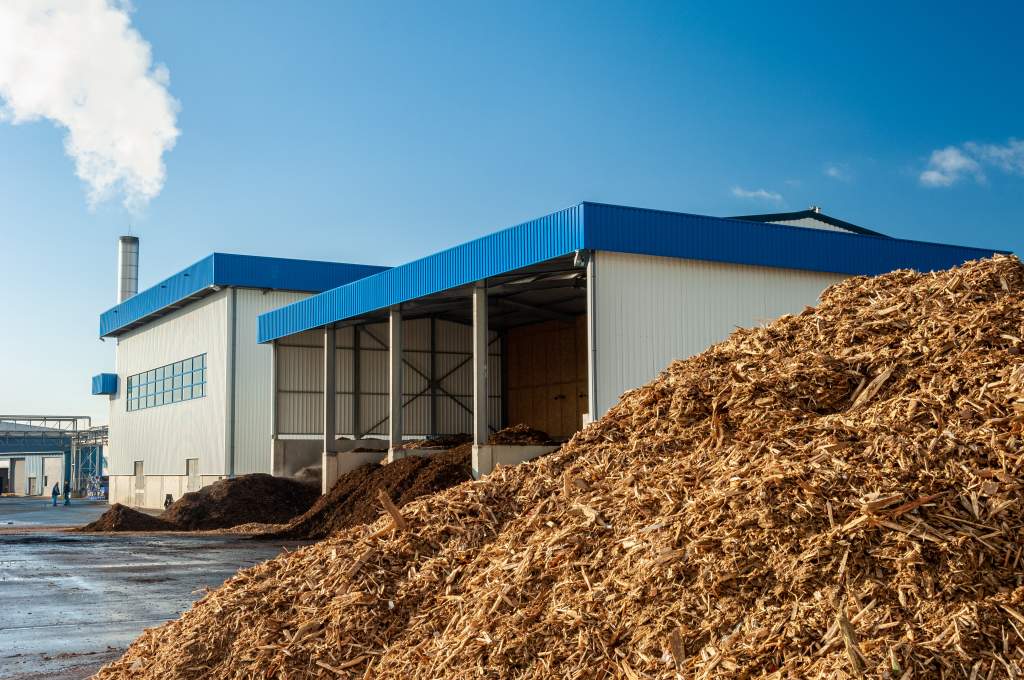
Biomass involves burning organic materials like wood chips, sawdust, and agricultural waste to generate heat. The use of biomass as heating can be beneficial because it uses agricultural, forest, urban and industrial residues and waste to produce heat and/or electricity with less effect on the environment than fossil fuels.
However, one of the drawbacks with biomass is that forests are important to keep, since loss of trees and other vegetation can cause desertification, soil erosion, flooding, and increased greenhouse gases in the atmosphere.
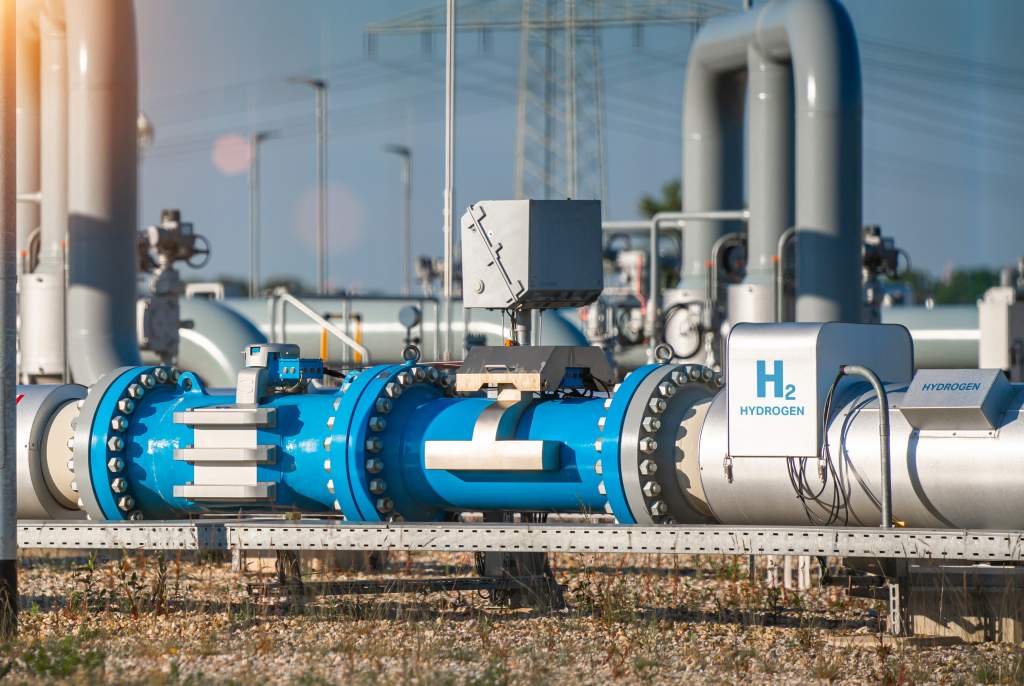
Let us also mention hydrogen in this context. Hydrogen has the potential to be a low-carbon heat solution, as it produces no greenhouse gas emissions when burned or used in fuel cells. However, its role is projected to be very limited for heating below 200 C.
Hydrogen’s widespread adoption and scalability is still in the early stages. There are also challenges to the common use of hydrogen, such as the high cost of production, transportation, and storage. Additionally, the vast majority of hydrogen production currently relies on fossil fuels, which generates greenhouse gas emissions.
Calculate your energy savings and reduced CO2 emissions with the Decarbonization Calculator >>